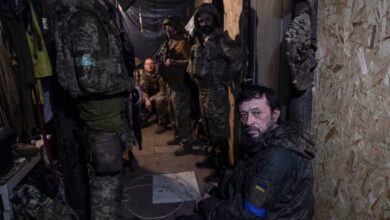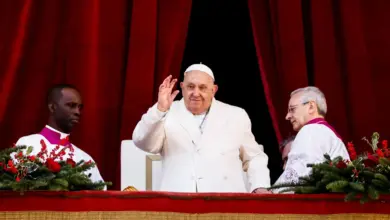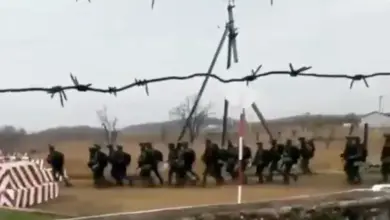
“We just got them, we haven’t used them yet, but it can radically change (the battlefield),” Brig. Gen. Oleksandr Tarnavsky told CNN at an interview in central Ukraine on Thursday morning.
On Thursday afternoon the Pentagon confirmed the presence of the munitions in country, saying “There are cluster munitions in Ukraine at this time.”
Tarnavsky is commander of the “Tavria” Joint Forces Operation, which is operating on a large section of the southern Ukraine front.
Tarnavsky added: “The enemy also understands that with getting this ammunition, we will have an advantage… the Russians think that we will use it on all areas of the front. This is very wrong. But they are very worried.”
Eyebrows were raised at the US delivery of these cluster munitions, which are banned in over 100 countries. Ukrainian forces, battling for every inch of territory taken by Russian forces over the past 504 days, are grateful amid low supplies of the 155mm standard artillery round.
High ranking officials have sought to assuage concern. US Secretary of Defense Lloyd Austin told CNN’s Wolf Blitzer on Thursday that the Ukrainians will only use cluster munitions in “appropriate places.”
Kyiv has already committed “in writing” to make sure that these munitions are not used in populated areas, Austin added.
“They will record the places that they use them and they will prioritize de-mining efforts,” he said. A line echoed by the Pentagon who reiterated that Ukraine, does not have “any interest in using the cluster munitions anywhere near the civilian population, unlike the Russians.”
‘The Russians prepared quite powerfully’
In Tarnavsky’s interview with CNN, a rare appearance with Western media, he covered a lot of ground in his limited time between meetings with his staff and inspecting troops across the front line.
The general says Ukraine is carrying out “large scale offensives,” while also admitting Ukrainian troops have made modest gains, especially in the south.
The expectation was that the counter offensive “should be fast, lightning-speed movement, the destruction of the enemy, capturing some frontiers, some objects, objects of attack and as a result achieve some goal.”
“It is successful, but not as much as each of us would like,” Tarnavsky said.
There is a simple reason for Ukraine’s lagging counteroffensive, he continued, explaining that “the Russians prepared quite powerfully for this event.”
Russian preparations centered around huge, elaborately sown minefields, making movement difficult and turning Ukrainian de-mining hardware into targets for Russian attacks. Manual demining is laborious and dangerous.
“They made very dense complex mining using minefields, high-explosive warheads, and the direct laying of powerful landmines, which are now located in the areas where equipment and personnel will pass.”
Making progress along the southern front is central to Ukraine’s summer plans, Kyiv has had to start to fight smart, at least in the short term, by economizing on artillery usage.
As Ukrainian soldiers try to pick a path through the minefields, near constant barrages of artillery from both sides have pummeled each other for weeks.
Tarnavsky uses a metaphor for the current state of the fighting: “It’s like in boxing, we hold the opponent at arm’s length. We don’t let them get close. Why? Because close combat is a completely different thing. So, at long distances, we defeat (them) effectively.”
Ukraine is trying to reach well beyond frontlines to hit command and control nodes, as they did successfully this week.
Russian losses
A rising star in the Russian military, Lt. Gen. Oleg Tsokov, was injured and killed in the Russian-occupied city of Berdyansk, on the Azov Sea.
According to a Russian Telegram channel, Military Informer, Tsokov died as a result of a strike by a long-range British Storm Shadow cruise missiles on the 58th Army’s reserve command post in a hotel.
Tarnavskiy refused to be drawn on the exact details of Tsokov’s death, but flatly said, “it turned out that this was the appropriate military commander who suffered the punishment he had to suffer.”
Battlefield victories like these can have a strategically destabilizing nature, he said. “When personnel receive information that their commander has died, it is not known who will lead them. This will definitely have a negative impact.”
He’s not the only high-profile figure to vanish recently, to Ukraine’s battlefield benefit.
Wagner boss Yevgeny Prigozhin appears to have incurred the wrath of Russian President Vladimir Putin after staging a short-lived rebellion last month. Tarnavsky called Wagner “a powerful and serious organization,” but was quick to highlight the confusion and chaos that has reigned on the Russian side since then.
“The more such events or such splits occur, the more positively it affects both the conduct of [Ukrainian] active actions and success, and directly on their state,” he added.




